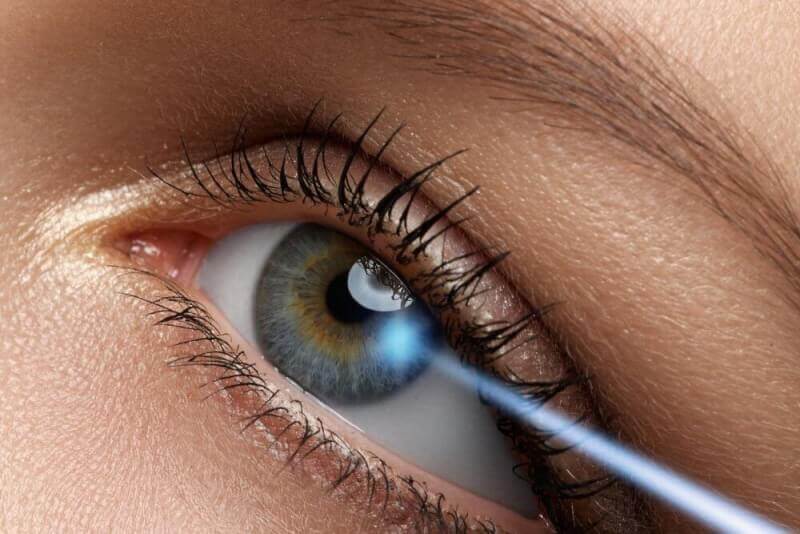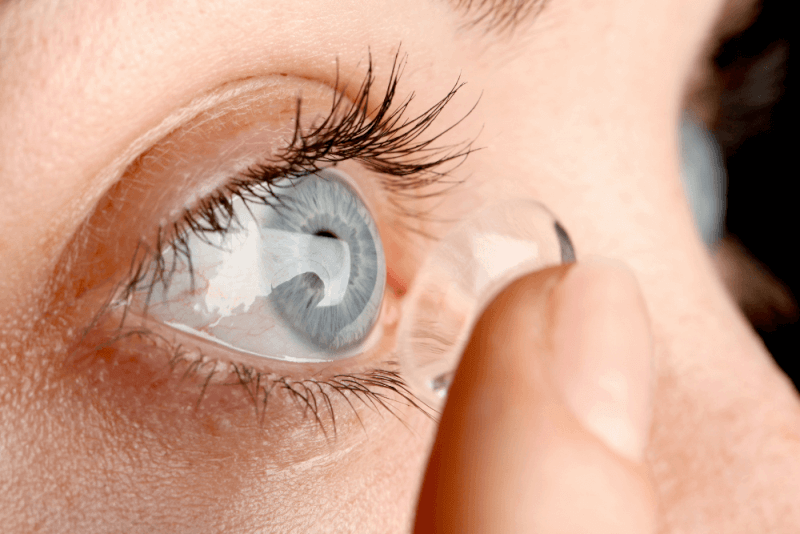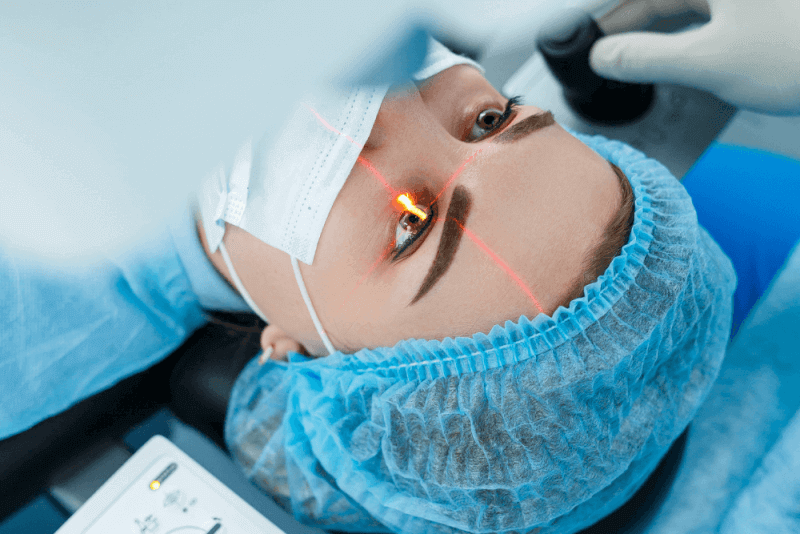What is laser eye surgery?
The procedure popularly referred to as eye reshaping is laser eye surgery. This surgery, which is performed with the help of laser beams, allows the cornea, the light filtering layer of the eye, to be reshaped. In this way, various visual defects such as hyperopia and myopia are treated.
Things to consider before laser eye surgery
The following are among the points that patients should pay attention to before eye surgery.
- Patients should not apply make-up around the eyes before the surgery.
- Perfume should not be used before surgery.
- Patients who wear contact lenses should stop wearing them a few days before surgery.
- If there are other issues that need to be taken into consideration according to the patient's specific situation, the doctor will give a special warning.
How is laser eye surgery performed?
Although different procedures are applied in eye reshaping surgeries, the basic procedures include the following.
- For the operation to be performed, the patient must lie on his/her back in the operating environment.
- The patient's face is covered with a sterile drape, leaving one eye open.
- The eye is numbed with drop anesthesia. In this way, patients do not feel any pain or soreness during the operation.
- If needed, a mild tranquilizer can be administered to patients to calm them down.
- The area around the anesthetized eye is sterilized thoroughly.
- The application can be done for both eyes on the same day.
- During the application, an apparatus called retractor is placed to keep the eyelid open.
Things to consider after laser eye surgery
After the surgery, first of all, the points reported by the doctor should be paid attention to. In addition, among the points that patients should pay attention to after surgery are the following.
- Regular use of prescribed drops
- The eye should not be hit or rubbed for about a week.
- Sports activities should be performed with protective glasses for the first 1 month after surgery.
- The eye should not be exposed to water for a few days after the operation.
- Medication should not be used immediately after surgery.
- Exertional work should be avoided in the first week after surgery.
- Check-ups should be done on a schedule determined by the doctor.
Blurred vision after laser eye surgery
The blurring process seen in patients after surgery differs according to the methods applied in laser surgeries. For example, while blurred vision is expected in the first week after PRK treatment, patients may have blurred vision for 1 to 2 days after the SMILE laser procedure.
Why is laser eye surgery performed?
Eye reshaping surgeries are generally performed to eliminate visual defects. In addition, various types of eye reshaping surgeries are also used in the treatment of different eye diseases. These eye diseases and vision disorders include the following.
- Hyperopia
- Myopia
- Cataract
- Astigmatism
- Cancer
- Retinopathy
- Glaucoma
Eye drawing conditions
Some conditions must be present in the patient in order to undergo an eye surgery. These conditions include the following.
- Being over 18 years of age.
- People between the ages of 20 and 35 have myopia degrees between -1 and -6
- Suitable eye structure
- Adequate cornea layer
- No congenital or genetic disease
- Not being pregnant or breastfeeding
- No change in spectacle size within the last year
- No history of eye herpes
- Some people who have had eye surgery or an eye injury may not be suitable for laser surgery.
Risks of laser eye reshaping
It is possible to see some side effects after eye surgeries performed with the laser method. The presence of various risk factors in these surgeries, which are not suitable for everyone, increases the likelihood of some complications. These complications include the following.
- Dryness in the eye
- Feeling like there is a foreign body in the eye
- Hazy vision
- Difficulty driving at night
- Sensitivity to light
- Small hemorrhages in the white part of the eye
- Agri
Among the risk factors that increase the likelihood of these side effects after laser operations are the following.
- Having diseases such as lupus or diabetes that may adversely affect the wound healing process
- Visual defects due to hormonal changes during breastfeeding or pregnancy
- Dry eye
- Thinner than normal corneal thickness
- A larger eyeball compared to normal standards
- Inflammation at the base of the eyelashes
Types of laser eye surgery
Laser eye surgery is divided into several sub-procedures. Which procedure will be applied to the patients is influenced by the general health status of the patients, vision problem, age of the patient and corneal structure. Among the common types of laser eye surgery are the following.
PRK
It is a treatment method applied to patients who have problems seeing far and near. It can also be applied to people who have had cataract surgery and whose retina is prone to rupture. It can also be applied to patients with thin corneas and steep angles.
This procedure starts with anesthetic eye drops. Anesthesia and procedure time varies between 50 seconds and 1 minute. Since the procedure is non-contact, it does not qualify as surgery. The eye is not contacted in any way during the procedure.
LASIK
The LASIK procedure, which is an extremely safe method that has been applied for many years, starts with an anesthetic drip. This way, patients do not feel anything during surgery.
LASIK surgery is performed with a special device called a microkeratome. With this instrument, the valve on the cornea is removed. This procedure is called corneal flap. The corneal flap is then folded backwards and thus removed from the laser procedure. Excimer laser beams are sent to the underlying tissue.
Patients do not feel any pain or ache during LASIK surgery, which is a method used especially in the treatment of myopia and hyperopia problems. It is possible to see satisfactory results within 3 to 5 days in the improvement of the patients' vision.
NO-TOUCH
The NO- TOUCH procedure, an operation performed without touching the eye, is applied to patients with hyperopia, myopia and astigmatism. There is no need to close the patient's eyes after treatment. Instead, glasses with UV protection are used.
SMILE
The SMILE method does not require flap opening. Because the laser pulse is realized in a very short time. In this method, a small femtosecond incision is made on the anterior surface of the cornea. Small incisions are then made in the deeper layers of the cornea and on the side. Through the incisions, the piece of tissue called the lenticule that causes the refractive error is removed.
iLASIK
The iLASIK method, one of the bladeless methods, uses wavefront and intralase methods. In addition to hyperopia, astigmatism and myopia problems, it is also used in the treatment of keratoconus and in the opening of suitable channels for ring treatment.
The incisions required for the procedure are made with the computer method. It is also possible to map the cornea with wavefront technology. Thanks to this technology, it is possible to determine the appropriate treatment for patients.
iLASIK method is used for the treatment of visual defects as well as glaucoma, dry eye, retinal vascular problems. iLASIK is usually performed in an office setting. Therefore, it does not qualify as surgery. The iLASIK method is diversified within itself.
IPL Laser Treatment
IPL laser treatment is a type of treatment applied in 3 to 4 sessions with 15-day intervals. In this procedure, a special gel is applied to both eyelids and then IPL laser is applied on the skin. The duration of the application is 2 minutes. Thanks to this application, blocked glands are opened. In addition, the oil layer on the surface is restored, thus solving the problem of dryness in the eyes.
Glaucoma laser therapy - SLT
It is a method applied to reduce intraocular pressure. Open-angle glaucoma treatment is performed by the doctor in a short period of time in the examination environment. Thanks to this procedure, the pressure inside the eye can be reduced by 30%. SLT can be used as an alternative to medication and surgical intervention. It can be repeated if necessary.
YAG Laser
Another procedure performed in the examination environment is the YAG laser. The dulling of the membrane behind the lens placed in cataract surgeries is removed over time.
Argon laser
Argon laser application is one of the procedures applied under examination conditions with anesthetic drops. It is used in the early diagnosis of retinal vascular hemorrhages and retinal tears to preserve vision.







